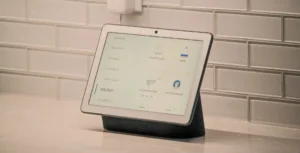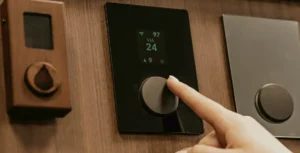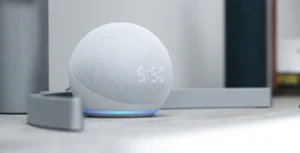Smart plugs are one of the fastest, simplest, and most affordable ways to make a home smarter and greener. Plug one in, connect it to Wi-Fi, and you can schedule appliances, cut phantom power, measure energy use, and link devices into routines that save both time and money. In this complete buyer’s guide, I’ll cover: how smart plugs work, what features matter for real savings, the best models in 2025 (with pros and cons), installation and safety tips, privacy considerations, and practical ways to use smart plugs to lower your bills.
This comprehensive buyer’s guide breaks down the best smart plugs in 2025, highlighting key features to look for and identifying which brands offer the best balance of price, performance, and compatibility.
Why Smart Plugs Matter in 2025
Small, cheap, and powerful — smart plugs let you automate and monitor devices that previously consumed energy silently. “Phantom load” (standby power used by chargers, TVs, and appliances when ‘off’) is real: depending on your home and habits, it can add several percent to your electricity bill. Installing smart plugs on high-usage or standby devices helps eliminate that waste and gives you immediate control via smartphone or voice assistant.
Real users and reviewers increasingly recommend smart plugs with energy metering as a first step for home energy management — measuring usage is the first step toward reducing it. For a broader energy strategy, pair plugs with a smart thermostat and energy-efficient appliances for the best long-term savings.
Before diving into the top brands, let’s quickly highlight why smart plugs are worth your attention:
- Energy savings – track and reduce electricity bills.
- Automation – create schedules and routines for lights, heaters, or small appliances.
- Voice control – integrate with Alexa, Google Home, or Siri.
- Remote access – switch devices on/off from anywhere.
- Safety – prevent overheating and reduce fire risks with overload protection.
For European users, another critical factor is compatibility with EU plugs, 220V/16A power standards, and CE certification.
What smart plugs actually do (short checklist)
When you buy a smart plug, you typically get some or all of the following features:
- Remote on/off control from a phone app.
- Scheduling and timers (turn devices off when you sleep or leave).
- Energy monitoring (real-time watts, historical kWh).
- Voice control via Alexa, Google Assistant, Siri (HomeKit/Matter).
- Integration into automations and routines.
- Local control options (important for reliability and privacy).
Not every plug has accurate metering or local control — those two attributes separate budget toys from tools you can trust for real energy management.
Key Features to Consider When Buying Smart Plugs
When comparing smart plugs in 2025, these are the most important parameters:
- Maximum Load – Most quality plugs handle up to 16A, perfect for kettles, heaters, and other high-power devices.
- Energy Monitoring – Real-time data on electricity usage helps you cut waste.
- App Ecosystem – Many smart plugs use Tuya/Smart Life, while others have their own apps (e.g., Shelly, Aqara).
- Smart Home Integration – Alexa, Google Assistant, Apple HomeKit, and Home Assistant are must-haves for flexibility.
- Wi-Fi vs. Zigbee vs. Matter – Wi-Fi plugs are easy to set up, Zigbee is more stable for multiple devices, and Matter ensures long-term compatibility.
- Build Quality & Safety – Look for CE/ROHS certification, fire-resistant materials, and overload protection.
The Best Smart Plugs in 2025
1. Eve Energy (Matter / Thread) — Best for Apple & Privacy-minded Homes
Why it stands out: Eve Energy’s plug is among the most “future-proof” smart plugs for Apple Home users — it supports Thread/Matter and prioritizes local control and privacy. It’s compact, reliable, and has decent energy reporting for household devices. If you run an Apple-centric setup or want a plug that’s not dependent on vendor cloud logins, Eve is a top choice.
Pros:
- Matter + Thread support for cross-platform compatibility.
- Strong privacy stance and local control options.
- Good HomeKit native support (no hub required for basic use).
Cons:
- Pricier than generic Wi-Fi plugs.
- Energy metering is useful but not as deeply featured as specialist metering hardware.
Best for: Apple Home users, privacy-conscious households, those who want a Thread mesh extension.
2. Shelly Plus / Shelly Plug S — Best for energy monitoring & Home Assistant users
Why it stands out: Shelly plugs (Plus or Plug S series) are favored by hobbyists and Home Assistant users because they offer accurate power metering, local LAN operation, and flexible firmware options. Shelly has been repeatedly recommended in smart-home communities for reliable metering and local automation. If you use Home Assistant or want precise consumption reporting without cloud lock-in, Shelly is excellent.
Pros:
- Accurate energy metering for load monitoring.
- Local control, robust integrations (MQTT, Home Assistant).
- Good power ratings (some EU models support up to 16 A).
Cons:
- The vendor app can be basic; power users usually pair Shelly with Home Assistant.
- Slightly more technical setup for advanced local automations.
Best for: Home Assistant users, people who want accurate local metering and LAN control.
3. TP-Link Kasa (Kasa Smart Wi-Fi Plug / EP-series) — Best all-rounder
Why it stands out: TP-Link’s Kasa series remains a reliable mainstream choice: robust app, wide availability, and solid integrations with Alexa and Google. Newer Kasa models are increasingly Matter-compatible, which helps interoperability. Tom’s Guide and other testers still recommend Kasa as the best plug for most people because of its reliability and user-friendly software.
Pros:
- Affordable and widely available.
- Mature app with scheduling and groups.
- Matter compatibility on newer units increases interoperability.
Cons:
- Some models lack accurate energy metering.
- Cloud dependence for some features (though Matter helps reduce this).
Best for: General consumers who want a reliable, no-fuss plug for lamps, coffee makers, and small appliances.
4. Meross / Wyze / Other budget smart plugs with energy monitoring — Best on a budget
Why they stand out: Brands like Meross, Wyze, and some Tuya/Tapo variants have introduced affordable smart plugs with energy monitoring. They’re great to get started with many devices without spending much. Be mindful: accuracy and local control vary across models. Use them where convenience matters more than perfect metering.
Pros:
- Low price point.
- Useful feature set (scheduling, basic metering).
- Good for large rollouts (many sockets).
Cons:
- Metering accuracy varies.
- Some models rely heavily on cloud infrastructure.
Best for: Cost-sensitive buyers outfitting many outlets for scheduling/remote on-off.
5. Leviton — Best for reliability and professional installs
Why they stand out: Leviton smart outlets are professional-grade, reliable, and often chosen for long-term builds. They’re pricier, sometimes require a hub, but are rock-solid and integrate well into more advanced home systems. If you want commercial reliability and local mesh performance, these brands excel.
Pros:
- Very reliable, long lifespan.
- Professional features and strong regional support.
- Good for whole-home installs.
Cons:
- More expensive, sometimes a hub is required.
- Not always focused on consumer energy metering.
Best suited for: Whole-home installations with higher budgets and users seeking proven reliability.
The Best Smart Plugs For Europe
-
LELLKI Tuya Smart Plug 16A EU
Original price was: $16.70.$10.18Current price is: $10.18. -
SONOFF S60 TPF EU Wifi Smart Plug 16A
Original price was: $13.31.$5.31Current price is: $5.31. -
MOES WiFi Smart Plug EU 16A
$14.87
1. SONOFF S40 / S40 Lite
Why it’s great: SONOFF has long been a trusted name in budget-friendly smart home devices. Their smart plugs are popular for reliability and broad ecosystem support.
Pros:
- Works with Alexa, Google Home, and the eWeLink app.
- Affordable but durable.
- Options with or without energy monitoring.
- Strong community support and even Tasmota/ESPHome flashing for advanced users.
Cons:
- Slightly bulkier design compared to Tuya models.
- Limited native HomeKit support (requires Homebridge or Matter version).
Ideal for: Budget-conscious buyers who want reliable smart plugs under €15 with optional energy monitoring.
2. Tuya / Smart Life Smart Plugs
Why it’s great: Tuya (and Smart Life app) powers many rebranded devices on AliExpress—like Moes, LELLKI, and Elivco. They’re affordable, compact, and easy to set up.
Pros:
- Massive variety of models (Wi-Fi, Zigbee, Matter).
- Seamless app experience with Smart Life or Tuya.
- Works with Alexa, Google Home, and even IFTTT.
- Budget-friendly—often available in multi-packs.
Cons:
- Quality varies by brand—stick to well-reviewed sellers.
- Energy monitoring isn’t always 100% accurate on low-cost models.
Ideal for: Beginners who want a cheap and simple entry into smart plugs with lots of options.
3. Shelly Plus Plug S / Plug UK / Plug EU
Why it’s great: Shelly is a European brand (Bulgaria) known for advanced, reliable, and cloud-independent smart plugs. Unlike Tuya, they can run locally, which appeals to privacy-focused users.
Pros:
- Works without cloud – local control via web UI or MQTT.
- Compatible with Alexa, Google, and Home Assistant.
- Detailed energy monitoring with graphs.
- Compact design, certified for EU use.
Cons:
- Pricier than Tuya (usually €20–30 per plug).
- Setup is slightly more technical for beginners.
Ideal for: Power users, privacy-focused households, and those who want local control without cloud dependency.
4. Aqara Smart Plug EU
Why it’s great: Aqara specializes in Zigbee devices that integrate beautifully with Apple HomeKit, Home Assistant, and Matter. Their smart plugs are sleek, efficient, and perfect for Apple users.
Pros:
- Zigbee 3.0 for stable performance.
- Full support for HomeKit, Alexa, and Google.
- Works as a Zigbee repeater—boosts your mesh network.
- Reliable energy monitoring.
Cons:
- Requires Aqara Hub (or another Zigbee hub).
- Slightly more expensive than Tuya alternatives.
Ideal for: Apple users and smart home enthusiasts who prefer Zigbee over Wi-Fi for stability.
5. Moes / LELLKI / ViKEFON (Budget Options)
Why it’s great: These are rebranded Tuya devices, often sold in multi-packs for €25–40, making them among the cheapest ways to automate your home.
Pros:
- Very affordable, especially in bundles.
- Works with Tuya/Smart Life ecosystem.
- Compact designs with 16A support.
- Good for bulk automation (lamps, routers, fans).
Cons:
- Build quality can vary.
- Limited lifespan compared to Shelly or Aqara.
Ideal for: Budget buyers who want to automate multiple outlets at once without spending much.
Practical use cases and example automations
To actually save money, the plug must be part of a plan. Here are simple, high-impact scenarios:
- Eliminate phantom loads: Place smart plugs on TVs, game consoles, printers, and chargers. Schedule them to cut power overnight.
- Scheduled appliances: Run slow-cookers on timers, or schedule fans and heaters only for occupied hours.
- Energy-aware automations: Use a plug’s energy report or a whole-home energy monitor to trigger automations (e.g., notify when washing machine finishes, or pause non-essential loads during peak pricing). For a broader energy strategy, combine plugs with a smart thermostat and efficient appliances.
- Vacation mode: Turn off or randomize lights while you’re away to save power and improve security.
If you want a one-week action plan, start with 3 plugs: one on the TV area, one on the kitchen small appliances, and one on a bedroom fan or heater. Track energy usage for two weeks, then expand where savings are highest.
Installation & safety tips
- Check the rating: Don’t use a 10 A plug with a heater that draws 12 A — pick the right regional rating (15 A in US, 13–16 A in many EU models). Shelly and Lutron list clear ratings.
- Keep firmware updated: Manufacturers release security and compatibility fixes — apply them.
- Prefer local control for mission-critical automations: If you rely on a plug to control a freezer or medical device, choose a model with LAN/local options.
- Avoid continuous heavy loads: Smart plugs are great for intermittent devices but not for permanent heavy loads (use inline relays / professional wiring for ovens/boilers).
Smart Plug Comparison Table (2025)
| Brand/Model | Protocol | Energy Monitoring | Smart Home Support | Price | Best For |
| TP-Link Kasa | Wi-Fi/Matter | Varies by model | Alexa, Google, Home Assistant | $10–24 | Most users (value) |
| Meross / Wyze / Tapo | Wi-Fi | Basic/variable | Alexa, Google | $13–30 | Budget deployments |
| Eve Energy | Thread/Matter | Yes | Apple/HomeKit & privacy | $38 | Apple Home users |
| SONOFF S40 | Wi-Fi | Yes/No options | Alexa, Google | $12–18 | Reliable budget option |
| Tuya/Smart Life | Wi-Fi/Zigbee/Matter | Yes (varies) | Alexa, Google, IFTTT | $10–15 | Beginners |
| Shelly Plus Plug S | Wi-Fi (Local) | Yes | Alexa, Google, Home Assistant | $20–30 | Power users, privacy |
| Aqara Smart Plug EU | Zigbee/Matter | Yes | HomeKit, Alexa, Google | $25–35 | Apple & Zigbee fans |
| Moes/LELLKI/etc. | Wi-Fi/Zigbee | Limited | Alexa, Google | $8–12 | Budget automation |
| Leviton | Wi-Fi (Local) | Limited | Alexa, Google, Leviton | $40 | Professional installs |
Final Buying Advice
If you’re building a practical, energy-saving smart home in 2025, start with:
- One or two smart plugs with energy metering: Shelly or Eve to measure standby loads.
- A reliable all-round smart plug: TP-Link Kasa or SONOFF to expand scheduling and voice control across the home.
- If you’re an Apple HomeKit user: Aqara is your best choice.
- If you want the cheapest option: go for Tuya-based plugs (Moes, LELLKI, Choifoo).
- Integrate with a smart thermostat and efficient appliances to multiply savings — see our guides on smart thermostats and top energy-efficient appliances.
If you choose for European country, make sure it supports 16A, EU plug type, and CE certification to ensure safe usage.
Smart plugs are small, inexpensive, and immediately useful — the perfect first step toward a more efficient home. Start with three, track usage, and expand where the data shows the biggest wins. Add smart power strips for even more energy savings.
Some of the links at our site are affiliate links; we may earn a small commission if you buy through these, at no extra cost to you.











